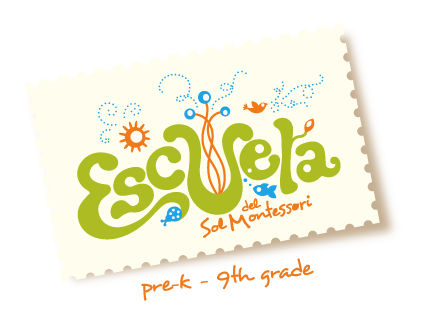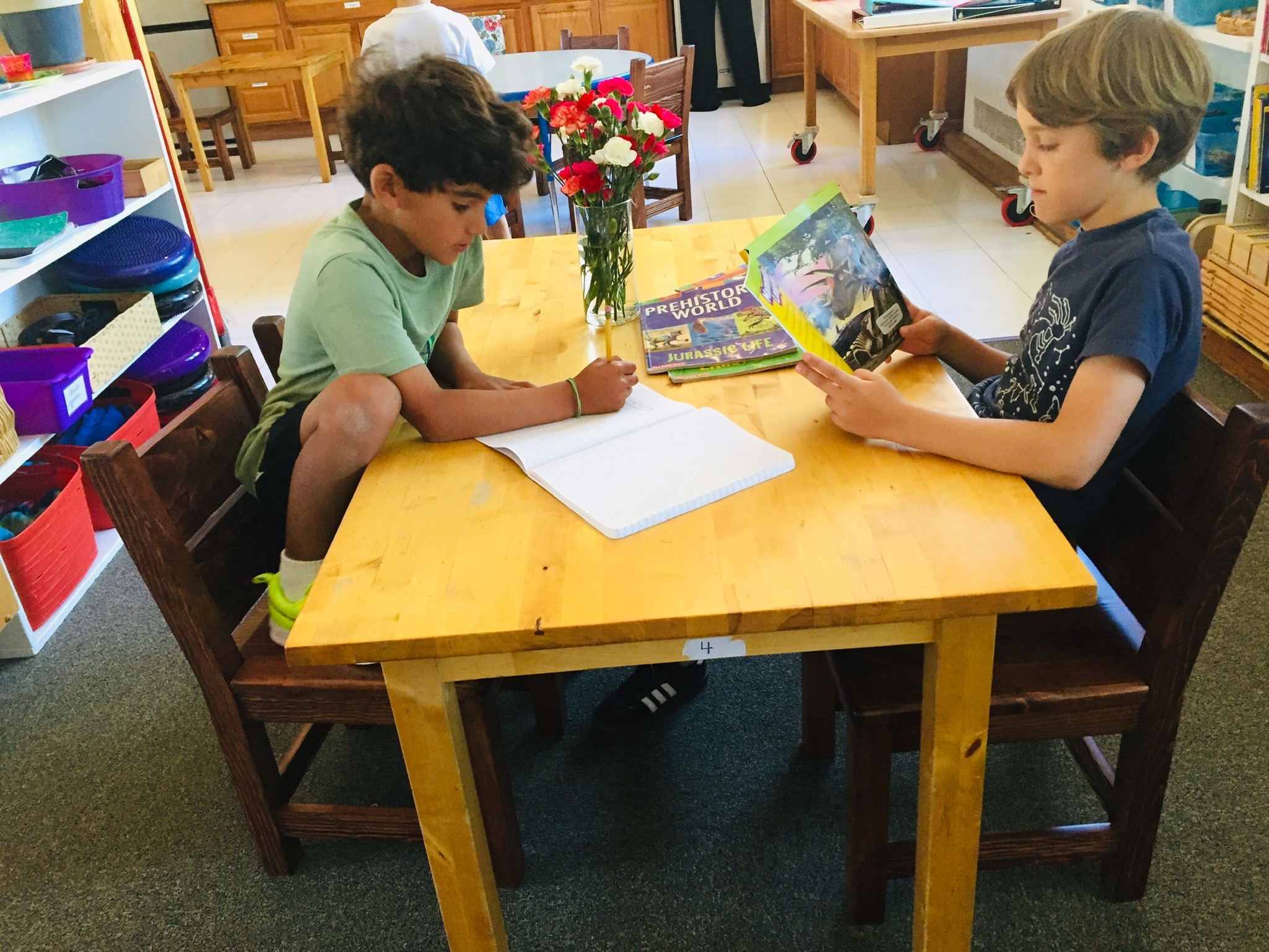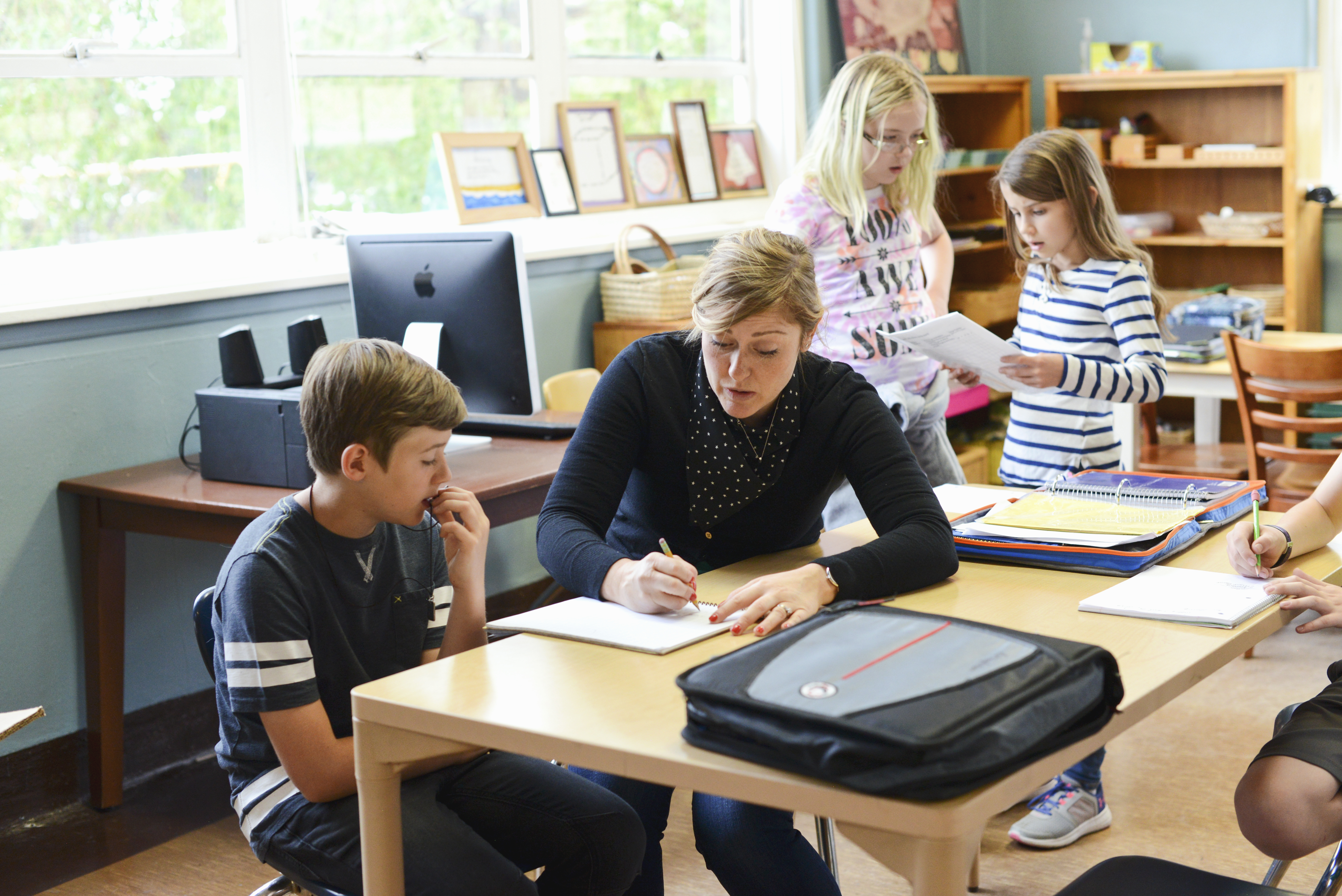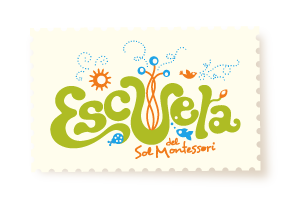Language is a vital tool

Language
All Levels Language Night
By Sarah Louderbough
Human beings are wired to connect. Communication continues to be a vital tool, and the development of language links inextricably with thought and ideas. Young children absorb languages effortlessly; they are sponges. The drive to communicate, to engage with others, to express needs and desires, is potent. Elementary-aged children delight in taking things apart to better understand how they work, and language is no exception. They experiment with the power of words, often eliciting strong reactions, and develop skills that allow them to access and share information in new and exciting ways. In early adolescence, the brain experiences incredible change second only to that which occurs between birth and age 3. Skills and concepts are revisited and applied in sophisticated new ways; language is an integral part of absolutely every area of adolescent life.
Language acquisition and development is nurtured in a wide variety of ways in every classroom at Escuela del Sol, from Toddlers to Jr. High. As human beings grow, their needs and abilities evolve; classroom environments, and the ways concepts are presented and explored also change. Our collaborative presentation about language across the levels offered parents a glimpse into the complex and sophisticated ways we support language development at Escuela del Sol Montessori. Below are a few highlights.
In the Toddler Classrooms, we are talking all the time! We provide numerous experiences to enrich language acquisition, from vocabulary materials and manipulative materials that support fine motor skills, to stimulating artwork and thoughtfully verbalized cooking projects. We take walks and talk about things we see. We give language while on the playground to describe actions, emotions, and needs, and to help children communicate with each other.
Language permeates the Primary classrooms as well; it is not just a set of materials or lessons, but a crucial stage of development. They are learning that the oral language they have begun to master is related to the written word. The hand continues to be prepared for writing. Children learn connections between sound and symbol, and are able to compose words with the movable alphabet before they are able to form letters with pencil and paper. Phonemic awareness continues to grow and foundations for reading are strengthened. We see an explosion into reading toward the end of Primary or in early Elementary.
Throughout the six years of Elementary, language development is like a fireworks display, colorful, varied, and firing, sometimes spiraling off in every direction. Foundational skills solidify; children read for practice, for information, and for pleasure. Elementary children write reports, stories, plays, comic strips, poetry, essays, persuasive letters…the opportunities are endless! Montessori grammar materials provide tools for independent exploration and a deep understanding of the functions of words. Logical analysis grows increasingly complex, and is far from the dull diagramming of sentences many of us remember.
In the Elementary, language is communication, self-expression, social connection, debate, presentation, conflict resolution, marketing, humor, and problem solving. Play, exploration, and proficiency with the rules and tools (including syntax, spelling, punctuation, sentence structure, voice, mood, cadence, style) allow students to bend them to their will. The results are joyous, profound, empowering, and informative. During the capstone year of Elementary, skills and self-awareness culminate in a thesis project that spans most of students’ 6th year.
“To make himself heard, man no longer depended on the volume of his voice. With the alphabet he could be heard from one continent to another, from yesterday to tomorrow. He could reach people distant in space and in time. Without uttering a sound – in silence – his thoughts could be heard all over the world at the same time.”
-Mario Montessori, quoting his mother
In the Jr. High just about every project, in every area, has the depth and sophistication of the thesis project in Senior Elementary. Language is everywhere: taking notes, mind mapping, outlines, MLA formatting. Work is refined through exhaustive self-editing, peer-editing, and work with teachers and other adults. Writing in Jr. High expands to topics such as the lives of mathematicians and why they thought what they did, or scientific writing to share the results and perhaps try to convince others of the effectiveness of a method.
Adolescents development centers around three key questions: Who am I? Where do I fit in? How do I contribute? Adolescents are especially tuned to work surrounding personal dignity, creativity, and social justice. Language is a means of self-expression and a vehicle for the transmission of cultural knowledge, memory and tradition. And of course language continues to be a means of human communication in social relationships and organization. In order to communicate effectively, and to communicate across boundaries and boarders, we need to be versed in many languages: science, theology, algebra and geometry, poetry and song, technology, economics and marketing, square roots and surface areas, classification schemes, listening, ethics, and citizenship. What languages do you need to describe yourself and others? How do you open and expand your vocabulary and skills so there is more room for description?
The Jr. High program is structured such that students have opportunities to work with a wide variety of professionals: architects, aerial yoga instructors, optical engineers, and bee keepers among others. Language in the Jr. High is expansive, integrated everywhere, and it is fairly abstract. We do have specific language lessons — the five paragraph essay, voice, form, discourse-specific language, grant writing, etc. — because we know that the more one writes, the better one gets at it, but only with meaningful intent. When students get to high school and beyond, they will have to write proficiently. So let’s provide experiences and skills that set students up for success and also support their creative, moral, personal and social development.
As our Adolescent Program Coordinator and Jr. High Guide, Ms. Tanesia, said, “Writing is a way to be known and to know others.”

Young children love to look at books, especially when they see you enjoying this activity. In the prepared Toddler environment, opportunities to see a variety of books, and the ability to choose what and when they would like to read, help to foster a love of books and reading.
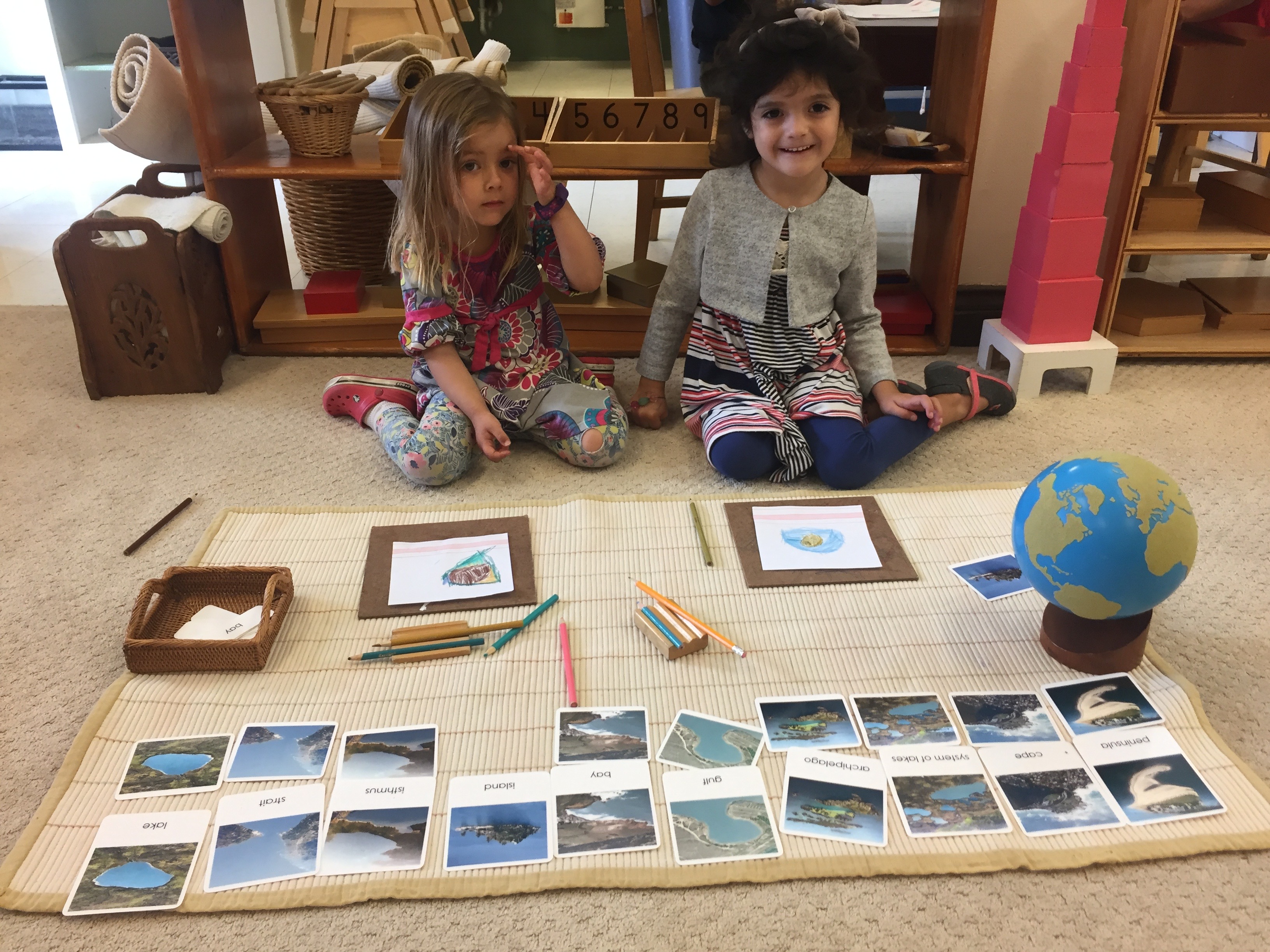
A variety of materials support vocabulary expansion and enrichment, such as these Earth science language cards used here in the Primary classroom. Children also strengthen fine-motor skills as they create drawings and other representations of new vocabulary and ideas.
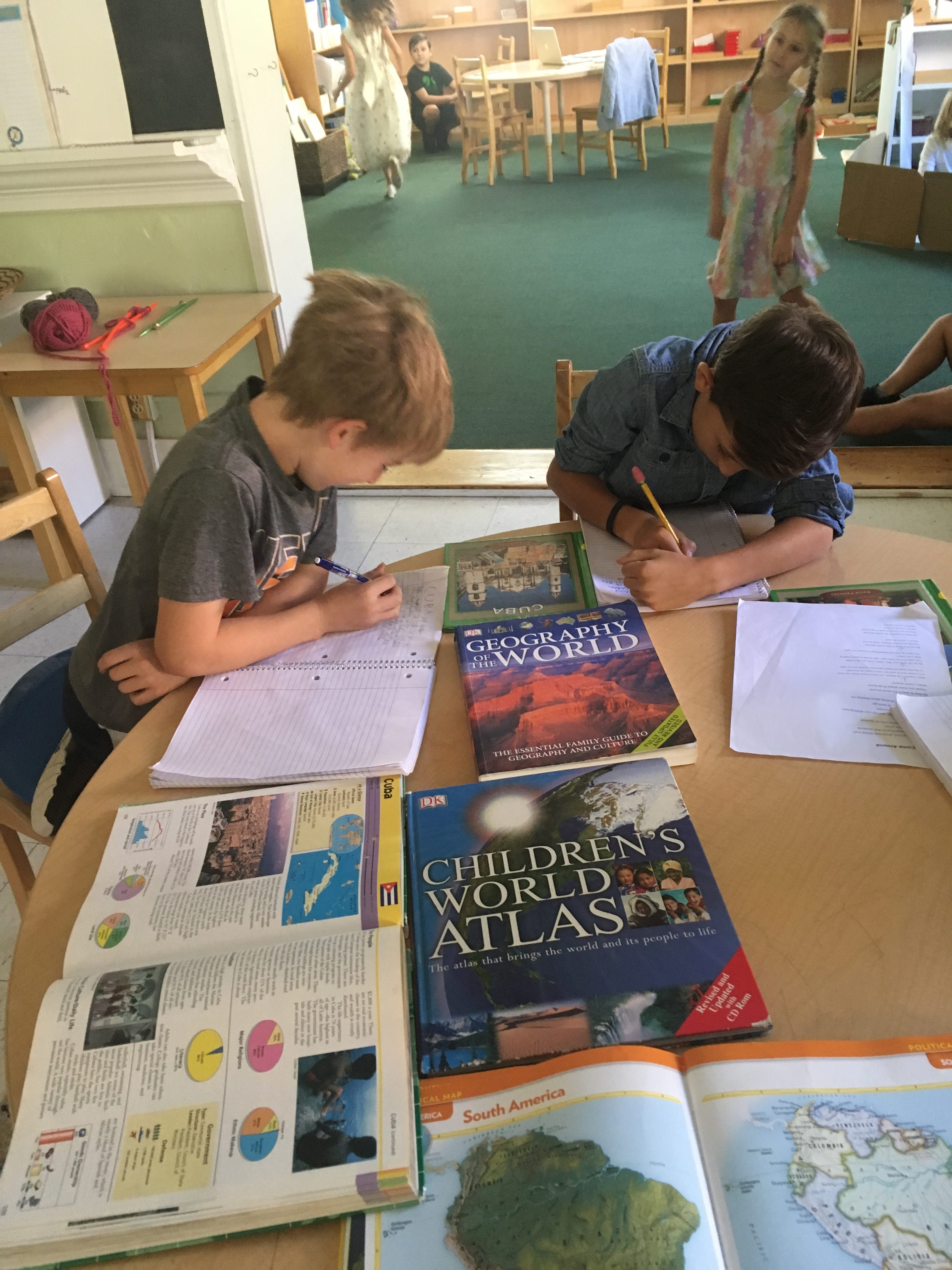
Gathering facts; summarizing information; and expressing, in their own words, things they’ve learned are sophisticated skills that students continue to develop throughout the six-year Elementary Program.
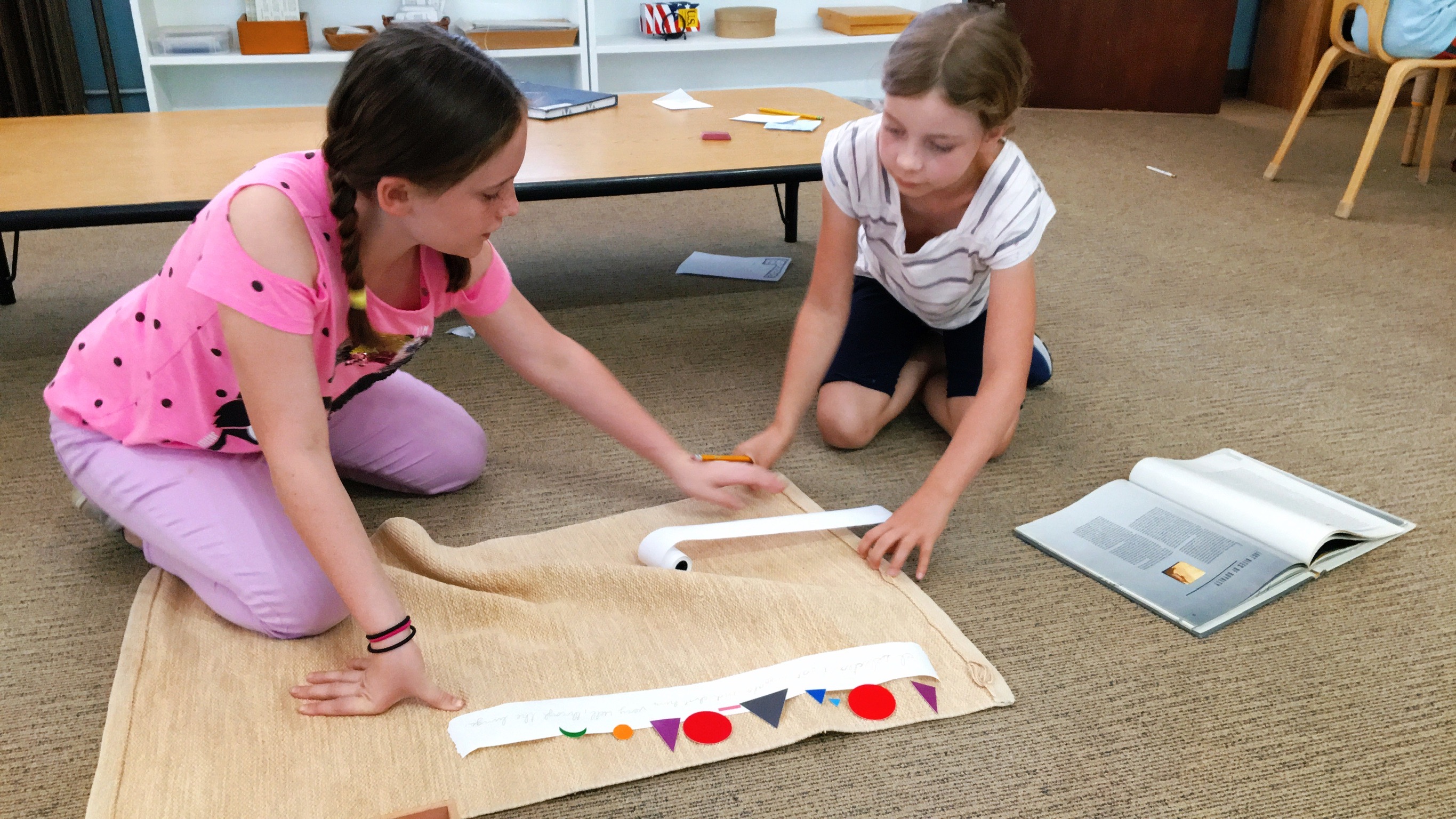
Children are introduced to grammar symbols in early childhood through function of word activities. These symbols continue to be used in many and more sophisticated ways throughout the elementary years. Patterns are illuminated, syntax and sentence structure are explored, and the complexities of grammar are discovered.
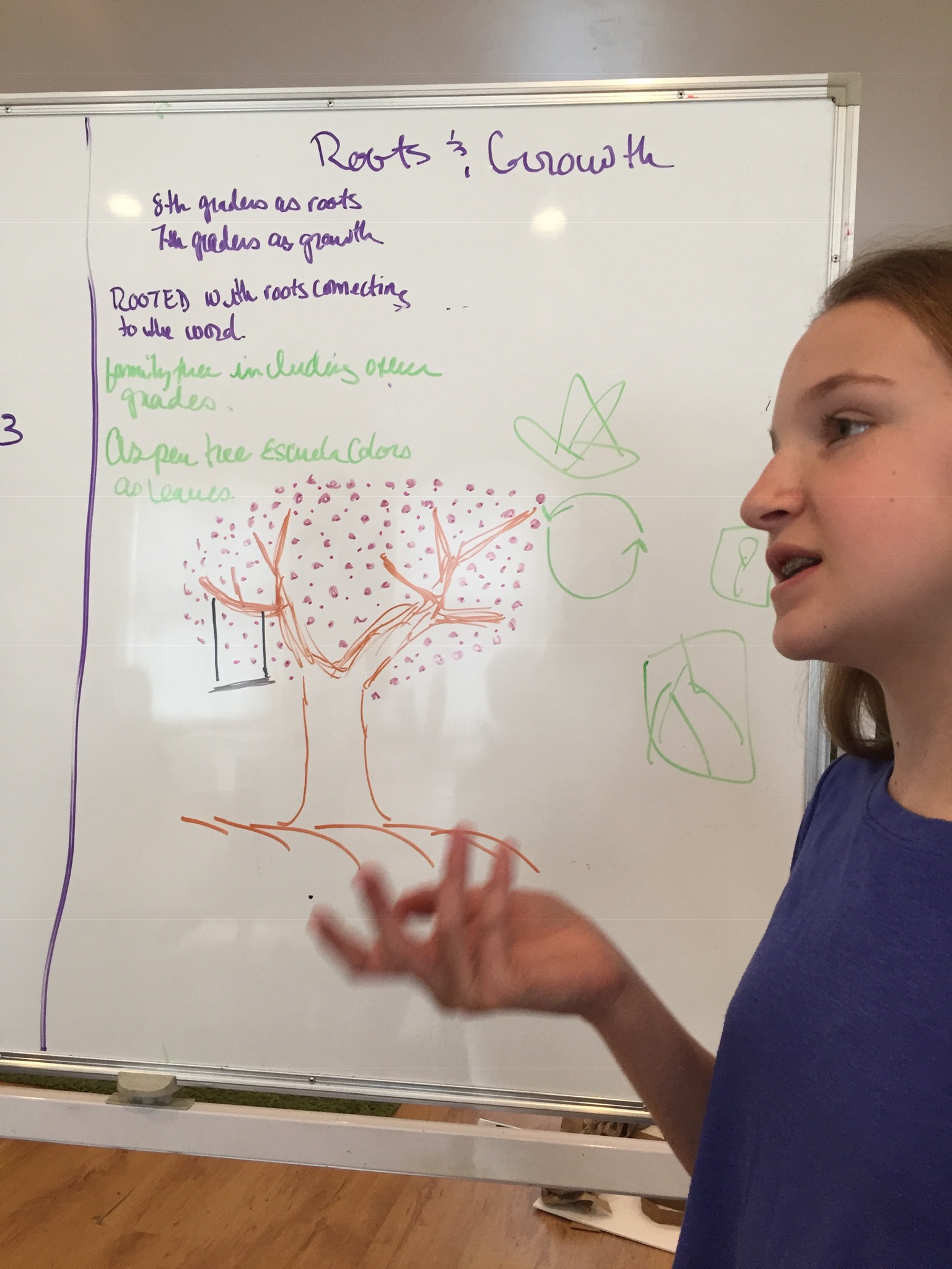
Adolescents are learning to apply knowledge and skills in new and exciting ways as they expand their awareness of self, community and culture. Language is everywhere in the Jr. High; students are expanding their abilities, expressing ideas, advocating one’s position, and inspiring others to organize and act.

